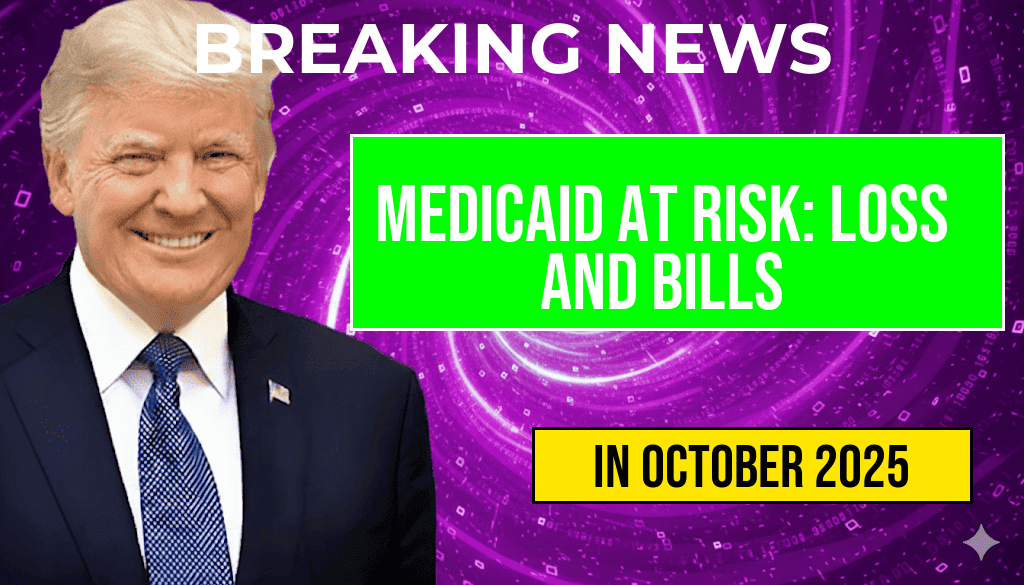Medicaid at Risk: CBO Warns Millions Could Lose Coverage Over Potential $1,000 Emergency Room Bills
Millions of Americans enrolled in Medicaid face potential coverage disruptions as the Congressional Budget Office (CBO) projects a surge in uncompensated emergency room bills, possibly exceeding $1,000 per patient. This development stems from recent policy proposals that could tighten eligibility criteria or reduce Medicaid funding, raising concerns about the financial strain on hospitals and the health security of vulnerable populations. The CBO’s analysis indicates that, if enacted, these measures could lead to a significant number of Medicaid recipients losing access to vital healthcare services, particularly in emergency settings. Experts warn that such changes may result in increased medical debt, reduced access to timely care, and broader public health implications, especially for low-income communities already disproportionately affected by healthcare disparities.
Background: Medicaid’s Role and Recent Policy Shifts
Medicaid, the joint federal and state program providing health coverage to over 80 million low-income Americans, has been a cornerstone of the nation’s healthcare safety net. Recent legislative efforts aim to modify eligibility requirements, potentially reducing enrollment or limiting benefits for certain populations. The proposed changes are often justified by arguments to curb federal spending or encourage employment, but critics argue they threaten to undermine the program’s core mission of ensuring healthcare access for the most vulnerable.
The CBO’s latest projections come amid ongoing debates over healthcare policy reforms that could impose stricter income or asset tests, or introduce work requirements. Such policies, if implemented, may result in eligibility denial or disenrollment for thousands, especially during economic downturns or health crises when medical emergencies become more prevalent.
The Financial Impact of Emergency Room Bills
| Scenario | Estimated Number of Affected Medicaid Recipients | Average Emergency Room Cost per Patient | Total Potential Uncompensated Costs |
|---|---|---|---|
| Current Policy | Approximately 80 million | $1,000 | $80 billion |
| Enacted Policy with Eligibility Reductions | Potentially 10-15 million fewer beneficiaries | $1,000 | $10–15 billion in uncompensated care |
The concern centers on the fact that uninsured patients often face the entire cost of emergency treatments, which hospitals are legally obliged to provide regardless of ability to pay. When Medicaid coverage diminishes, hospitals may see a rise in unpaid bills, resulting in financial strain that could translate into higher healthcare costs for everyone, including increased insurance premiums and taxes.
Public Health and Economic Consequences
Loss of Medicaid coverage can lead to delayed or foregone emergency care, exacerbating health conditions that might have been manageable if addressed early. Data from the Centers for Medicare & Medicaid Services (CMS) indicates that uninsured individuals are less likely to seek timely care, often resulting in more severe health outcomes and higher long-term costs.
Furthermore, hospitals serving low-income communities could face closures or service reductions due to mounting unpaid bills, further limiting access for vulnerable populations. The ripple effects extend beyond individual health, potentially impacting community health metrics and increasing reliance on costly inpatient services.
Policy Experts and Advocacy Groups React
Healthcare advocacy organizations argue that the proposed policy changes threaten to undo decades of progress in expanding access to care. Dr. Lisa Patel, director of the National Health Equity Coalition, warns, “Reducing Medicaid coverage not only jeopardizes individual health but also destabilizes local healthcare infrastructure.” She emphasizes that emergency rooms serve as the primary safety net for many Americans, and increased uncompensated care could undermine hospital sustainability.
Conversely, some policymakers contend that tightening eligibility is necessary to control federal spending and promote personal responsibility. However, critics counter that such measures disproportionately affect the most economically vulnerable, including children, the elderly, and persons with disabilities.
Looking Ahead: Risks and Policy Considerations
The CBO’s forecast underscores the potential fallout from policy shifts that could restrict Medicaid access. While lawmakers debate the merits of proposed reforms, healthcare providers remain concerned about the operational and financial stability of hospitals, particularly in underserved areas. The possibility of millions facing thousands of dollars in emergency bills highlights the importance of safeguarding the program’s core functions.
As negotiations continue, experts recommend policymakers carefully weigh the broader implications of eligibility and funding modifications. Maintaining Medicaid’s expansive coverage is crucial, not only for individual health outcomes but also for the financial health of hospitals and the overall stability of the healthcare system.
For more on Medicaid and healthcare policy debates, visit Wikipedia’s Medicaid article and Forbes coverage.
Frequently Asked Questions
What is the main concern raised by the CBO regarding Medicaid?
The CBO warns that millions of people could lose their Medicaid coverage due to potential $1,000 emergency room bills and changes in policy or eligibility criteria.
How could emergency room bills impact Medicaid recipients?
High emergency room bills of around $1,000 could lead to coverage loss if recipients are unable to afford the costs or if policies change to restrict eligibility based on financial thresholds.
What are the potential consequences of losing Medicaid coverage?
Loss of Medicaid coverage may result in increased medical debt, reduced access to necessary health services, and worsened health outcomes for vulnerable populations.
Who is most at risk of losing Medicaid according to the CBO?
The most at-risk groups include low-income individuals, those with unexpected medical expenses like emergency room visits, and people whose eligibility could be affected by recent policy changes.
What policy changes could lead to these potential Medicaid coverage losses?
Potential changes include tightening eligibility requirements, implementing income thresholds, or removing certain waivers that currently allow more people to access Medicaid assistance.

Leave a Reply